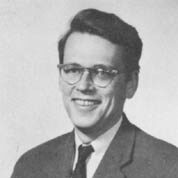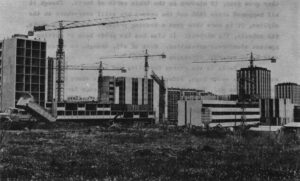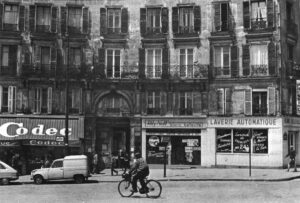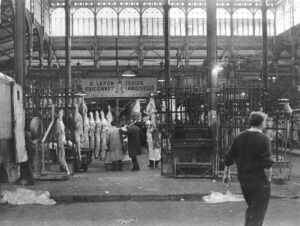Andrew Barnes
- 1969

Fellowship Title:
- Urban Problems in Europe
Fellowship Year:
- 1969

Sarcelles & Cergy – How to Build Some More City
PARIS – The high rise towers and garden apartments of Sarcelles would seem quite ordinary outside any American city. They mark the familiar sleepy town boomed with city people. In fact, with its attractive trees, somewhat distinctive architecture, walking-distance shopping and general air of liveliness, Sarcelles seems a little better than ordinary. But here in Paris Sarcelles is: famous; shocking; the topic of novels; and the favorite horrible example of every urban reformer. Aside from all these things, Sarcelles is an apartment city of about 50,000 residents, plunked down next to a town of 8000 where they grew peas, 12 minutes on the train north of Paris. Though it all happened since 1956 and the cranes are still everywhere on the skyline, it is more than just a housing project. It has its parks, its schools, its markets. It also has the pride born of uniting against slanderous accusation. Most of all, though, it seems a well built suburban extension of Paris. And Paris is the reason Sarcelles and a dozen other places exist. Like

What is a Slum?
PARIS – Somebody else’s slum is hard to see. Poppincourt, the 11th Arrondissement, is a case in point. East of the Marais, the oldest quarter of Paris and target of preservation and rebuilding efforts, south of the Goutte-d’Or, which everybody known is a slum, you can spend a day walking the tree-lined boulevards of Poppincourt seeing nothing but bourgeois Paris. Up Boulevard Richard Lenoir from the Bastille, then down Boulevard Voltaire from Place de la Republique to Place de la Nation, the aspect belongs to Baron Haussmann, the Robert Moses who, as prefect of Paris at the end of the last century, widened the boulevards, built the parks and spurred the city’s last real residential building boom. The six-story buff-colored buildings with ornate ironwork facades wear their age easily. And as on all such Paris streets, shopkeepers stand in their doorways admiring the sun after a week of rain. Women push the remarkably posh perambulators that are the Paris standard, making their daily purchases. Old people sit talking on the benches at the curb. Off

Les Halles
PARIS – For 800 years the central market of this city and much of France, Les Halles, will soon be no more. Vegetables, fruit, eggs, cheese and flowers are gone. Only meat remains, and it too will soon be moved. With them will go the streets jammed with trucks, the sidewalks and bars jammed with strong men. Left behind is 100 acres of the busiest center of Paris, and a fight over how to rebuild a city without destroying it in the process. At 6 a.m., up the Autoroute du Sud to Paris, all three lanes are dilapidated Citroens, shiny vans and three-wheeled scooters, crammed with Spanish oranges, Moroccan tomatoes and very fresh eggs for a city that likes to eat. Grocers, restaurant buyers and, increasingly, central provisioners have since February made their dawn drive to Rungis, next to Orly Airport, where they park in vast lots and walk into utilitarian-modern sheds to choose among the endless stacked crates of just-arrived vegetables, cheeses, eggs and fish. Bargaining done, supplies are quickly loaded at wide docks,
